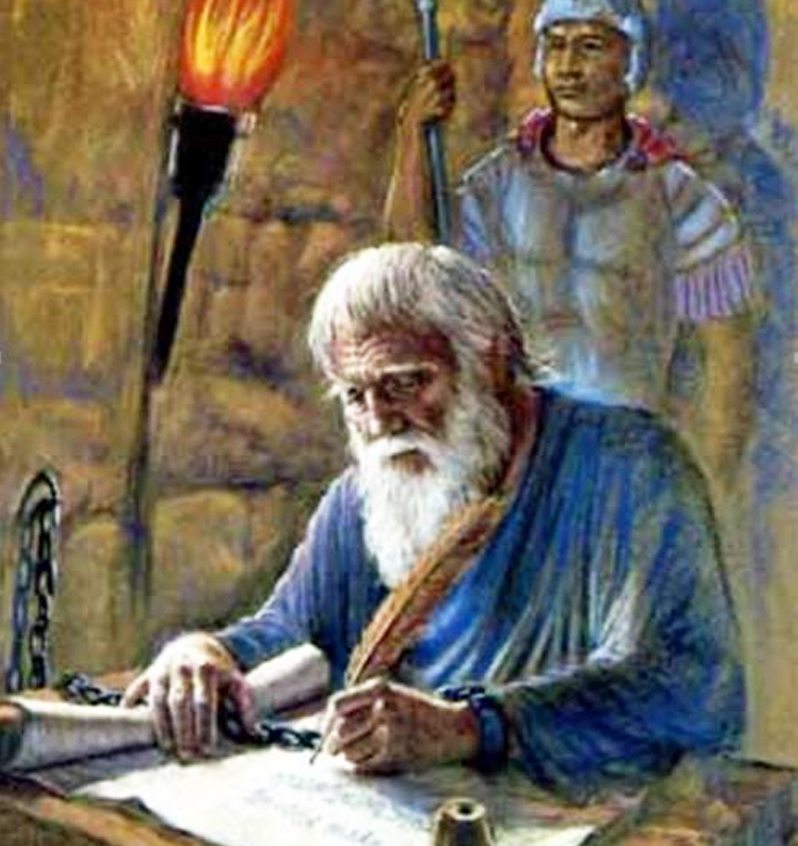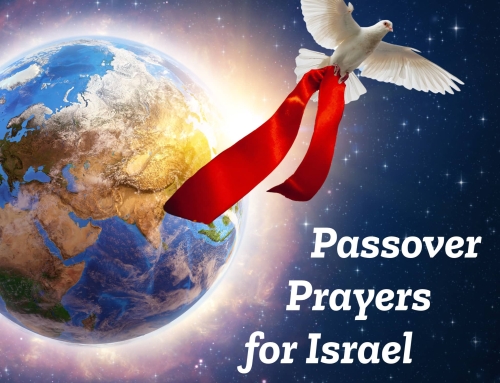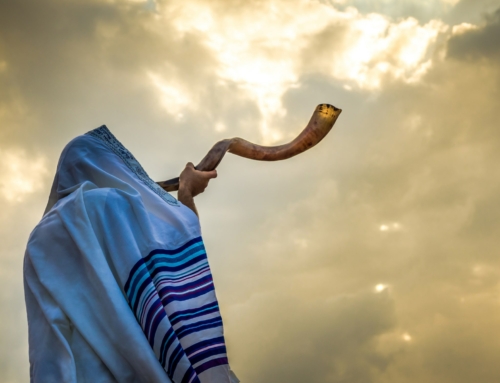By John David Pitcher Jr., MD
Have you ever wanted to make a discovery like Alexander Fleming’s penicillin or Frederick Banting’s insulin, two of the greatest discoveries in medicine that were made in the 20th century that has led to physical healing?
Even greater than discoveries in medicine I dare say has been a discovery in Scripture– the Dead Sea Scrolls which have been called the greatest archaeological discovery in the 20th century that has brought spiritual healing of countless through the confirmation of the authenticity and accuracy of Scripture.
It is generally accepted that a Bedouin goat-herder by the name of Mohammed Ahmed el-Hamed (nicknamed edh-Dhib, “the wolf”) made the first discovery toward the beginning of 1947. In the most commonly told story, he threw a rock into a cave in an attempt to drive out a missing animal under his care. The shattering sound of pottery drew him into the cave, where he found several ancient jars containing scrolls wrapped in linen.
Now I would like to announce the greatest literary discovery in the 21st century, and it has been perfectly preserved throughout history since it was completed in 67 AD. Bear with me as I explain its significance, and what this discovery is.
I was the boy that threw the rock into the cave, so to speak, and found it.
According to my Jewish friends, the most important Hebrew word that a Christian should know is Torah. The Torah of course is the first five books of the Hebrew Scriptures, Genesis through Deuteronomy. The second most important Jewish word that a Christian should know according to my Jewish friends is the word Midrash. The Midrashim (plural of Midrash) are Jewish commentaries on the Torah that were written by multiple Jewish scholars from 300-1400 AD, although we don’t know a lot of detail about those scholars.
The term “beit midrash” (“house of learning” or “instruction”) first appeared in the 2nd Century BC (in Hebrew) in a book of the Apocrypha, The Wisdom of ben Sirach:
“Draw near to me, you who are uneducated, and lodge in the house of instruction.” (Sirach 51:23; New Revised Standard Version)
I’ve been honored to discover a Midrash that was begun in 55 AD and was finalized in 67 AD, written by one author that we know a lot about. It has been hidden in plain sight since 67 A.D. as six letters when it was completed although there is no evidence that the six letters that comprise it were ever placed together back-to-back.
A little background before I explain where I “unearthed” this finding.
The New Testament contains 27 different books. Fourteen of these were written in the form of letters by the Apostle Paul, a Jew miraculously confronted by the Resurrected Messiah.
The Hebrew Scripture contains 39 different books. Five of these were written by Moses and are called the Torah, or Pentateuch.
The writer of the Midrash that I have been honored to discover took over 1300 words in sectional order out of the Hexateuch. The Hexateuch (“six scrolls”) is the first six books of the Hebrew Bible: the Torah (Pentateuch) and Joshua. He put those words in sectional order in six letters that he wrote in the first century forming the framework of the Midrash. He drew from the Hexateuch ideas around this framework to compose the six letters that have over 18,000 combined ancient (Koine) Greek in them. The number of words used as the framework compose about 7% of the combined total words of the Midrash.
This Midrash, older than any others ever discovered, has been hidden as a complete document in the Christian Bible, and the writer of the letters was the Apostle Paul. Six of his fourteen letters comprise the Midrash. He is illustrated above by my late friend L. Henry (Hank) Jones’s chalk drawing of the apostle in prison where many of these letters in his Midrash were written.
Paul’s Midrash of the Hexateuch predates any of the known Midrashim by over 200 years. These writings are Jewish in thought and contain all the elements of Midrash, unknown by Christians but well known by our Jewish brothers and sisters. These elements are levels called the Peshat, Remez, Derash, and the Sod. They are Jewish writings.
The Source Text and the Midrash are:
• Genesis: Hebrews
• Exodus/Esther: Galatians
• Leviticus: Romans
• Numbers: 2 Timothy
• Deuteronomy: 1 Timothy
• Joshua: Titus
Since Paul definitively wrote the last five letters of the Midrash, I’ve been honored to be the person in the 21st century to prove therefore that Paul wrote the Book of Hebrews. Since he used the Septuagint, the Greek translation of the Hebrew Scripture to form the framework, I can also definitively say that the book of Hebrews was first written in Koine Greek.
Midrash is a commentary on the Hebrew Scripture. Many authors have previously recognized Paul’s style as Midrash but the discovery of an entire Midrash of the Hexateuch within six of Paul’s letters will undoubtedly be received with skepticism by some, indifference by others, and with wonder by the alert. Paul himself received instruction from Gamaliel (Acts 22:3, cf. 26:4-5), the grandson of Hillel, and was the Apostle to the Gentiles. And now we receive instruction from him in Jewish thought that has been hidden for nearly two millennia.
While reading Paul’s six letters and their semblative nature to the Torah and the book of Joshua, realize he had “parchments” but no computer program or commentary. He relied upon the Holy Spirit. That rest, that “good thing” promised to God’s people, is the manner by which his six letters should be re-read.
Unlike previously discovered Midrashim that date 300 to 1400 AD, this Midrash was completed before June 29, 67 A.D., believed to be the date of the author’s beheading. Unlike other Midrashim where little is known of the author, eight other letters full of personal information were written by this author to supplement his Midrash of the first six books as well as the book of Esther which he overlays in thought with the book of Exodus. Additionally the Book of Acts supplements our knowledge of his life and exploits.
It will not surprise the Bible scholar that this Midrash was found perfectly preserved within six of Paul’s letters of the New Testament because the Bible is timeless and provides an inexhaustible study of the words God has spoken.
There are Anchor Points where the Midrash cannot be tugged in either direction from the Source text. There are anticipatory and reflective echoes and many other new terms just as in anything newly discovered. There are explanations through Midrash of single letters, individual words, and verses that have been controversial or previously unnoticed.
It is anticipated that others will build upon this discovery.
In 2006, when the first pages of the discovery were unfolding, the world was not ready for the findings. Today, the world is less ready to hear of the findings: God has chosen a people to bring salvation to the world during a difficult period in the world’s history. Even the people that God has chosen are not ready to hear of the findings.
It is a difficult task. Reveal an intricately woven scholarly work within an intricately woven scholarly work. Exegetically and evangelically understand the writer’s thoughts in light of two thousand years prior to his life and at the same time 2000 years after his death. Recognize that this is the most important discovery in Scripture since the Dead Sea Scrolls and that although not on fragile parchment, the findings must not be mutilated.
The words written by the Apostle Paul were inspired by the Holy Spirit. They were God-breathed. The same Holy Spirit that inspired Paul to write this Midrash was the Revealer. And He is not finished. He will reveal even further truths as the Hexateuch is studied and compared to the six Pauline letters. May this short article provide a springboard of clarity enveloped in grace for its readers, both Jews and Gentiles alike for further research of these six letters and their relationship to the Hexateuch.
The words “In the beginning” imply an ending. Paul identifies those elements in the Torah (and Joshua) that foretell that ending and hides them in his six letters for a future generation to discover through Midrash. That generation is ours.
I’ve entitled the Midrash, “The Oldest Midrash. The Identity of the Messiah.” It has been a monumental task and is in five volumes. Volumes 1 and 4 are nearly ready to post in their entirety. Volumes 2, 3, and 5 are coming along.








Leave A Comment